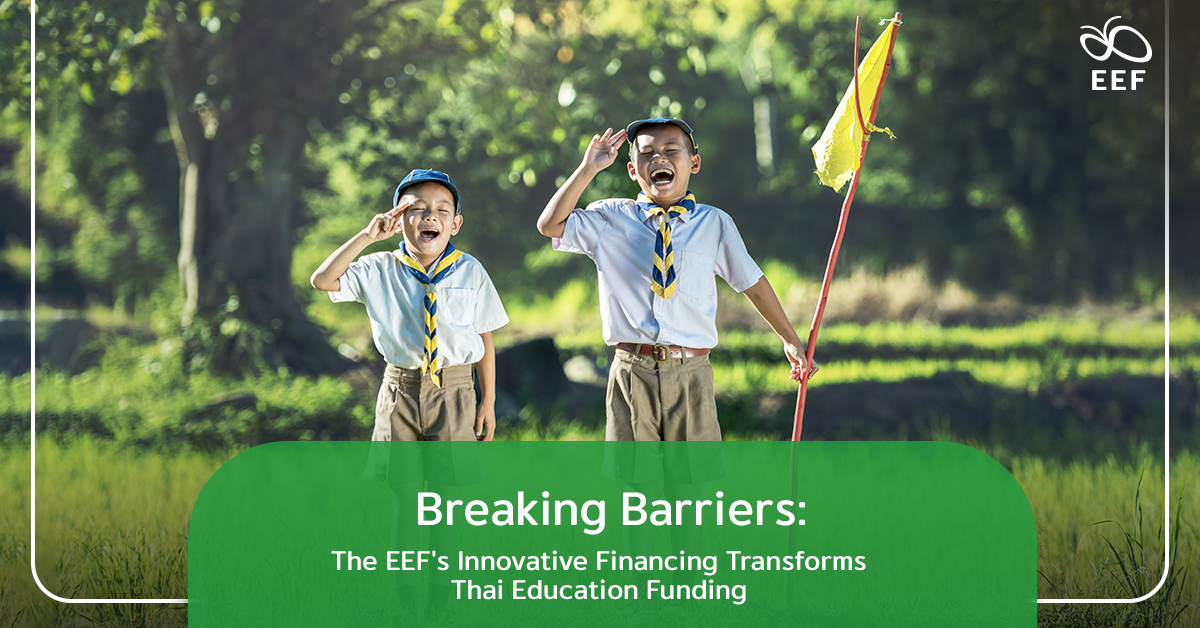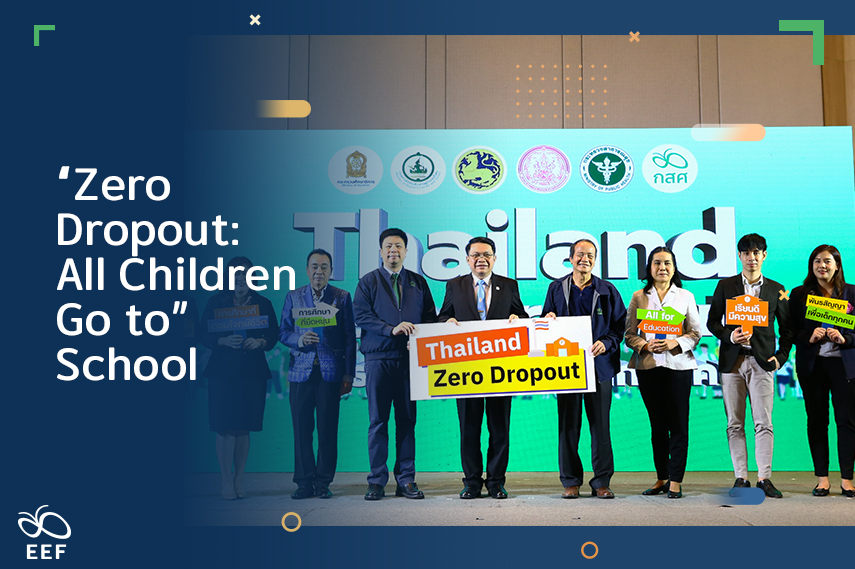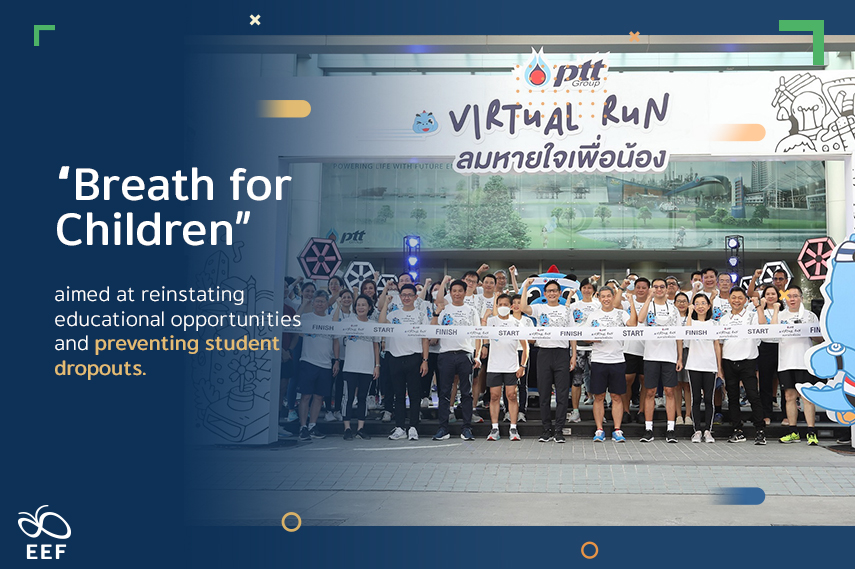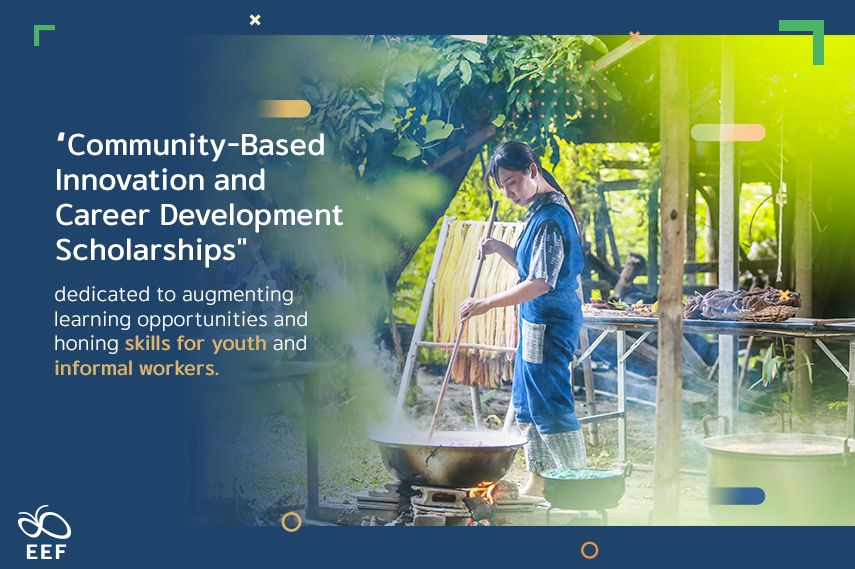
In 2023, the number of economically disadvantaged students drastically skyrocketed to 1.8 million, with 1.2 million classified as very poor — a significant increase from 994,428 in 2020. Furthermore, tracking economically disadvantaged students’ journey from 2019 to 2023 spotlighted alarming patterns; While 168,307 students completed compulsory education in 2019, in 2020 approximately 20% (33,547) dropped out primarily due to poverty and restricted access to secondary education. The highest period for dropouts was during term breaks, specifically between May and June —and this was particularly true for students from very poor households, with an average income of merely 1,094 Thai Baht/person/month or 30-40 Thai Baht/person/day. Despite the introduction of a 15-year free education policy, severe poverty persisted, hindering households from meeting educational expenses. And by 2023, only around 12% (21,921) pursued tertiary education — a significant decline in the likelihood of higher education, lower than the national average. That is, only 1 in 10 economically disadvantaged students could access tertiary education, far below the expected rate.
Navigating the critical transition from lower to upper secondary levels or vocational education, students face disengagement characterized by school changes and financiaburdens, which include challenges in accessing crucial information on available financial aid, limiting self-funded options, and relying on loans. Conditions set by aid providers and institutions more often than not fail to cater to economically disadvantaged students, and delayed fund disbursement disrupts the seamless pursuit of education, especially as transitioning to tertiary education introduces new hurdles, with the financial burden becoming insurmountable for many. Additional strains include expenses within the TCAS system, initial university costs, and immediate term fees, with issues related to self-funding persisting, affecting students’ awareness of available aid and limiting their options in selecting fields of study. Delays in fund disbursement and surpassing tuition payment deadlines further impede students, underscoring the substantial challenges faced during this pivotal educational transition.

In the persistent challenge of reintegrating economically disadvantaged youth back into normalcy, addressing educational disparities, and advancing educational equity, the Equitable Education Fund (EEF) Thailand takes center stage, backed by governmental support. While tackling these individuals’ financial constraints, its dual funding approach itself —public allocations and donations — grapples with the financial difficulties faced by the Thai government, highlighting its insufficiency for lasting impact. Recognition of this challenge underscores the crucial role private sectors play, urging innovative financial solutions to mobilize their resources for enhanced learning access, learning outcomes, and alternative education opportunities. It is this realization that has catalyzed the EEF’s development of innovative financing models, forging impactful collaborations with major private corporations.
To establish a comprehensive safety net that keeps children and youth from falling out of the educational system and ensures that they achieve the highest possible education levels, the imperative lies in not only fortifying ties with state mechanisms but also channeling funds from innovative sources. With this in mind, the EEF strategically leverages state mechanisms as accelerators, expanding and optimizing the educational system. Simultaneously, it engages in a dynamic interplay of inventive financial mobilization strategies — from bond issuance and fundraising activities, to fund mobilization and establishment. This game-changing strategy emerges as a pivotal force in alleviating educational disparities and propelling advancements.

In an unprecedented collaboration, the EEF partnered with Sansiri Public Company Limited, King Mongkut’s University of Technology Thonburi (KMUTT), and the Ratchaburi Education Area Office (District 1) for the groundbreaking “Zero Dropout: All Children Go to School” project in Suan Phueng district, Ratchaburi province. Sansiri took an innovative step by issuing its corporate bonds worth 100 million Thai Baht, marking the first such move in Asia to raise funds for an educational project. The initiative specifically targeted preventing dropouts during term breaks, providing scholarships along with various measures, with special emphasis on Grade 6 and Grade 9 students who received financial support, with amounts of 1,000 and 3,000 Baht, respectively. As a result, around 80% (approximately 1,000 students) continued their education at a higher level, showcasing Zero Dropout’s tangible impact in supporting educational continuity.

The EEF, through its collaboration with PTT Public Company Limited, raised over 151 million Baht through the “PTT Virtual Run” activity, part of the “Breath for Children” project, aimed at reinstating educational opportunities and preventing student dropouts. Notably, the fundraising activity engaged over 80,000 participants, who collectively covered a staggering 600,000 kilometers within just six days, successfully reintegrating more than 60,000 targeted children and youth back into the educational system. The financial contribution, while not sizable, significantly aided in keeping these young individuals within the educational system, lessening their burden of educational expenses. The PTT Virtual Run, along with its continuations, sought to further fund emergency cases of children and youth needing support to remain in the educational system, with participants having the added incentive of winning souvenirs.
The EEF received a generous 1-million-Thai Baht donation from the Securities and Exchange Commission in commemoration of the “3 Decades of SEC for Thai Capital Market, for Thai Society” project, marking the Commission’s 30th anniversary. Recognized as a cornerstone of society and a catalyst for economic growth in the Thai capital market, the SEC joined forces with the EEF to champion educational equality and advance research development. This unified effort underscored the strategic alliance, where the two synergized their resources to empower upcoming generations and nurture a more equitable society. Emphasizing its dedication to social development, this collaboration ensured that education served as a powerful force for positive transformation, community upliftment, and the overall progress of the country.

In a concerted effort, the EEF, the SCG Foundation, and the Community-Based Research Institute collaboratively embarked on the transformative “Community-Based Innovation and Career Development Scholarships“ project. Within the expansive framework dedicated to augmenting learning opportunities and honing skills for youth and informal workers, the initiative aimed to subsequently seamlessly integrate them into the workforce, fostering sustainable community strengthening. The shared objective was the establishment of a model fund designed to propel both learning and career development, with a distinctive emphasis on the connection between “fund” and “career,” both functioning as pivotal tools facilitating learning. Rooted in community bases, tailored projects were crafted to address specific needs, particularly targeting disadvantaged groups, centering on nurturing shared learning and active community involvement. Encouraging ownership and engagement, the approach sought to empower economically disadvantaged youth and informal workers in fund management, employing financial innovations to alleviate educational disparities. This comprehensive strategy not only broadened career options but also generated social returns, significantly benefiting the broader community.
The collaborative efforts outlined in these four cases collectively demonstrate the effectiveness of innovative financial models in addressing educational disparities and fostering sustainable community development in Thailand. Partnerships across public, private, and civil society sectors showcase diverse approaches, such as leveraging corporate bonds, organizing fundraising events, receiving generous donations, and establishing innovative funds. These initiatives successfully reintegrated students back into the educational system, prevented dropouts, and broadened career opportunities for youth and informal workers. The overarching theme highlights the transformative impact when organizations unite with a shared vision to champion educational equality, positively transform communities, and contribute to societal progress as a whole.
Upon examining the four projects, the collaborative pursuit of impactful educational interventions becomes evident. Organizations, to ensure effectiveness, must align their goals with funders, fostering clarity on their purposes and beneficiaries. This shared vision propels both organizations and funders towards sustainable impact, with key performance indicators involving the cultivation of enduring knowledge within practitioners like organizations and education stakeholders like teachers, parents, or community members. Essential to this collaboration is building a mutual understanding of the long-term benefits of joint efforts and making prompt adjustments if deviations occur, recognizing that returns on social investments extend beyond monetary metrics to intrinsic value. Emphasizing system change and measurable indicators facilitates environmental shifts in how businesses, regulatory bodies, and social-focused organizations operate.

Critical factors for success involve leveraging data from the EEF’s Information System for Equitable Education (iSEE) to identify and assist children and youth in need. Combined with a sustainable mechanism and clearly defined outcome targets, this ensures a focus on addressing dropout challenges, setting a precedent for private sector organizations to adopt innovative financial models in the education sector. Private sectors, beyond financial support, must actively engage in project monitoring, fostering shared responsibility and demonstrating that investments yield sustainable changes. Maximizing funding opportunities requires recognizing the diverse pool of potential funders. Vital to secure ongoing support is effective communication of project results, emphasizing clear indicators of impact and benefits, and meeting the expectations of funders and by extension the general public. Organizations should reassess strategies to instill confidence, create innovative financial models aligning with needs, and efficiently achieve educational disparity reduction goals.
The concept of innovative financing proves pivotal, enabling children and youth to remain in the educational system as a safety net against future issues like unemployment and low-skilled workforces. Without this concept, accessing such opportunities would be challenging for them. The EEF’s commitment to reducing educational disparities through innovative financial models positions it as a key player in advancing educational equity in Thailand and beyond. Collaborations showcase corporate contributions to educational causes, highlighting the EEF’s proactive approach and successful initiatives, underscoring its potential for sustainable impact, addressing financial challenges, and advancing educational equity globally in accordance with the All for Education strategy.

As the country grapples with the inadequacy of free education policies and persistent poverty, the Equitable Education Fund pioneers innovative financial models, forging alliances that transcend corporate philanthropy. These collaborations exemplify the transformative power when disparate entities unite under a common vision —a vision that extends beyond educational realms to uplift communities, fostering societal progress. The EEF’s commitment underscores the urgency for a comprehensive safety net, intertwining state mechanisms and inventive financial mobilization, to secure the educational aspirations of children and youth. In contemplating these endeavors, one is compelled to reflect on the profound impact that collective determination, fueled by innovative financial strategies, can have in reshaping the educational landscape and charting a course toward a more equitable and enlightened future.

